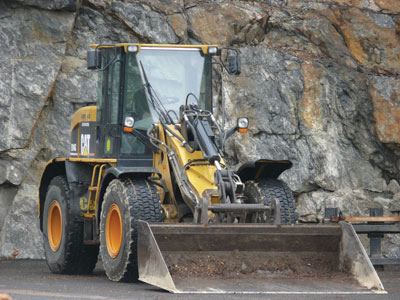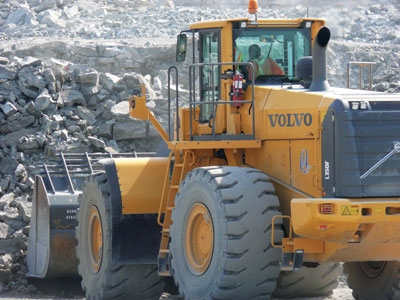
Features
Columns
Education
Creating a National Standard
Heavy equipment operators facing Red Seal certification.
August 10, 2012 By Peter Caulfield
In a bid to increase the number of heavy equipment operators who are
available to work in the roadbuilding industry in all parts of Canada
In a bid to increase the number of heavy equipment operators who are available to work in the roadbuilding industry in all parts of Canada, Human Resources and Skills Development Canada (HRSDC), a department of the federal government, is co-ordinating a project to develop Red Seal standards for operators across the country.

|
|
The Red Seal certification program enables qualified tradespeople to practise their trade in any province or territory without having to write additional examinations. Red Seal was established in 1959 and covers 52 different trades. Operators will also have to satisfy provincial standards, which vary from province to province, and which must equal or exceed Red Seal standards.
The wheels to bring Red Seal certification to heavy equipment operators were set in motion in 2010, and the standards are expected to be developed, approved and in place by the end of 2012. Industry training organizations from Newfoundland, Nova Scotia, Prince Edward Island, New Brunswick, Quebec and British Columbia are taking part in establishing Red Seal standards.
 |
|
According to HRSDC’s Canadian Occupational Projection System, the supply of and demand for heavy equipment operators across the country are expected to be roughly in balance between 2011 and 2020. “However, the demand is not likely to be evenly spread across the country, making it even more important to have a consistent and rigorous national standard in the Red Seal,” said Kevin Evans, CEO of B.C.’s Industry Training Authority, a provincial crown agency that approves standards, funds training and awards certification in the province.
And, according to a labor forecast by the Construction Sector Council, supply and demand conditions for heavy equipment operators in 15 different regions of the country during the same time period will differ greatly not only between different regions, but also within regions, as economic activity ebbs and flows.
The project to develop a Red Seal certification program for heavy equipment operators began when the Canadian Council of Directors of Apprenticeship (CCDA), which oversees Red Seal administration, determined there was sufficient future demand for heavy equipment operators to justify the program. “We established there was a need for cross-country mobility of heavy equipment operators,” said Evans, who is also B.C.’s representative on the CCDA.
The first step of the project was the completion of a national occupation analysis, which identifies the work heavy equipment operators need to perform for Red Seal certification. To facilitate understanding of the occupation, the work is divided into several categories, from general to specific: blocks, tasks, sub-tasks and key competencies. The analysis was published in March 2012 and is available on the Red Seal website.
The CCDA noted that considerable emphasis is being placed on safety.
“Changes to regulations and standards will have an impact on the duties and the way industry and heavy equipment operators deal with situations that arise on site. With increased emphasis on eco-friendly practices, operators are required to practise environmental stewardship.”
With the national occupational analysis out of the way, the focus has switched to the development of a standard examination.
After the exam has been created, the training organizations will bring in subject matter experts who will conduct peer reviews and make any adjustments to it that are required.
 |
|
| Heavy equipment like wheel loaders would be subject to Red Seal certification.
|
British Columbia is the host province for the Red Seal heavy equipment operator project. Russell Robertson, CEO of B.C.’s Transportation Career Development Association (transCDA), an independent, not-for-profit industry training organization, says the province is taking the lead because its training standards for heavy equipment operators are more developed than in other Canadian jurisdictions.
B.C. standards for heavy equipment operators were developed several years ago.
Jack Davidson, president of B.C. Roadbuilders and Heavy Equipment Association, says B.C. saw the need for heavy equipment training standards when a skills shortage in the province appeared at the beginning of the decade. B.C. Roadbuilders, through its human resources department, created the initial heavy equipment operator training programs in 2004-5. The ITA put the programs in place in 2006. Today, transCDA is updating the provincial program so that it meets both the new Red Seal standard and the needs of B.C. industry.
In B.C., student operators receive both in-school and hands-on equipment training to learn the essential skills in the safe operation of heavy equipment. There are courses available on 12 different pieces of heavy equipment. Training takes place at public universities and at private training schools. Four weeks of classroom training and anywhere from 200 to 600 hours of documented in-seat experience, depending on the piece of machinery, are required for ITA certification.
Red Seal apprenticeship is the next step in bringing standardized training to as many heavy equipment operators in Canada as possible.
Print this page